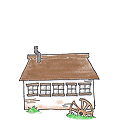 Summary
Summary
In this practical book, Sepp Holzer explains the principles of his permaculture and shows how they can be handy even already implemented in the small garden in the balcony garden. He also makes it clear in many examples, as well as the acquisition even agriculture can be designed according to these principles and what alternatives there are.
• Creation of micro-climate zones by sun traps, wind brake and, ways of steering and storage of water, pseudo-problem dryness.
• improving soil health, importance of plant communities, mixed cultures.
• application of permaculture in small and city gardens, patio and balcony gardens and cottage garden.
• Naturbelassener fruit growing in large and small scale, fruit growing in alpine regions and on difficult surfaces, artistic design (Mehrstämmigkeit and Zwiesel trees). Finishing techniques, old varieties for special purposes (fires, juices, vinegar …)
• Mushroom cultivation on straw and wood, forest mushroom cultivation
• Alpine plants in lowland
• Fertilization, regulation of problem plants and face drought in Crop Production. Old varieties, alternative products such as herbs, flowers, alpine plants, seed production, among others.
Where to get it?
Amazon.com
Amazon.ca
Amazon.co.uk
Amazon.au
Powell's
Related Podcasts
Paul Wheaton Podcast 237 - Sepp Holzer's Permaculture Chapter 6
Podcast 153 -Sepp Holzer's Permaculture Chapter 5 Part 3
Podcast 152 -Sepp Holzer's Permaculture Chapter 5 Part 2
Podcast 151 -Sepp Holzer's Permaculture Chapter 5 Part 1
Podcast 150 -Sepp Holzer's Permaculture Chapter 4 Part 2
Podcast 148 -Sepp Holzer's Permaculture Chapter 4 Part 1
Podcast 147 -Sepp Holzer's Permaculture Chapter 3 Part 2 Continued
Podcast 146 -Sepp Holzer's Permaculture Chapter 3 Part 2
Podcast 142 -Sepp Holzer's Permaculture Chapter 3 Part 1 Continued
Podcast 141 -Sepp Holzer's Permaculture Chapter 3 Part 1
Podcast 133 -Sepp Holzer's Permaculture Chapter 2 Part 5
Podcast 132 -Sepp Holzer's Permaculture Chapter 2 Part 4
Podcast 127 -Sepp Holzer's Permaculture Chapter 2 Part 3
Podcast 126 -Sepp Holzer's Permaculture Chapter 2 Part 2
Podcast 125 -Sepp Holzer's Permaculture Chapter 2 Part 1
Podcast 105 -Sepp Holzer's Permaculture Chapter 1 Part 5
Podcast 083 -Sepp Holzer's Permaculture Chapter 1 Part 4
Podcast 082 -Sepp Holzer's Permaculture Chapter 1 Part 3
Podcast 081 -Sepp Holzer's Permaculture Chapter 1 Part 2
Podcast 080 -Sepp Holzer's Permaculture Chapter 1 Part 1
Podcast 074 -Sepp Holzer's Permaculture Chapter 1 Preface
Related Videos
Related Articles
Sepp Holzer's Article at Richsoil
Related Threads
Sepp Holzer - US Tour - Spring 2013 - Workshops and Certification Program thread at Permies
Sepp Holzer is coming to Montana thread at Permies
Sepp Holzer uses no irrigation thread at Permies
Sepp Holzer thread at Permies
Related Websites
Sepp Holzer Permaculture
 2
2













 1
1









 1
1




 1
1




 2
2



























 1
1














